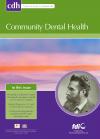Community Dental Health

- Cover Date:
- September 2008
- Print ISSN:
- 0265 539X
- Vol:
- 25
- Issue:
- 3
Cariogenic and erosive potential of the medication used by HIV-infected children: pH and sugar concentration
Objective The aim of this work was to analyze pH and sugar concentration in seven antiretroviral and three antibacterial medications frequently prescribed to HIV infected paediatric patients. Method Sugars (sucrose, glucose, lactose and fructose) and pH were measured from every one of ten medications with different serial numbers in two samples. The pH was determined by a previously calibrated digital pHmeter (Beckmanâ„¢). Analysis of free sugars was performed using thin-layer chromatography (TLC). The pH results and the amount of sugar originated from the two samples in each lot were added. The arithmetic mean of these results were computed. Results Two antiretrovirals (Zidovudin and Abacavir Sulphate) had pH below critical level (3.55 and 3.93, respectively). All three antibacterials analyzed had pH above 5.5, and one of them (Azithromycin) had the highest pH level of the ten medications examined (9.28). Sugar was present in seven out of 10 of the medications analyzed. The antibacterials contained the highest concentration of sucrose, ranging from 40% to 54%. Glucose was found in one of the ten, sucrose was present in seven of them and none showed lactose. Fructose was not observed with the technique used. Conclusions A number of medications frequently used by HIV-infected children may cause a significant risk of both caries and dental erosion.
Key words: Child, HIV, medicines, oral health, sugars.
- Article Price
- £15.00
- Institution Article Price
- £
- Page Start
- 170
- Page End
- 172
- Authors
- L. Pomarico, G. Czauski, M.B. Portela, I.P.R. de Souza, L. Kneipp, R.M. de Araújo Soares, G.F.B de Araújo Castro
Articles from this issue
- Title
- Pg. Start
- Pg. End
- Comparison of two methods in deriving a short version of oral health-related quality of life measure.
- 132
- 136
- The presenting complaints of low income adults for emergency dental care: An analysis of 35,000 episodes in Victoria, Australia.
- 143
- 147
- Cariogenic and erosive potential of the medication used by HIV-infected children: pH and sugar concentration
- 170
- 172
- Enamel fluorosis in 12- and 15-year-old school children in Costa Rica. Results of a National Survey, 1999
- 178
- 184
- Short Communication - Fissure sealants on permanent first molars – consequences of a one-year delay
- 191
- 192
